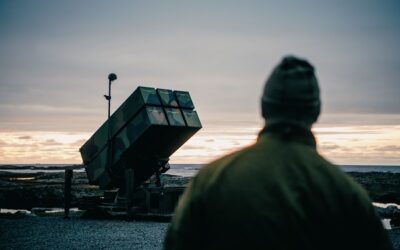Swiss Electronic Warfare
Speaking at this year’s EW Europe conference in Lausanne, western Switzerland, Colonel Ernst Grossenbacher, head of military operations and doctrine for Swiss Army Electronic Warfare (EW), informed delegates of the force’s new EW or ‘EWar’ doctrine.
Col. Grossenbacher emphasised that the doctrine encompasses the gamut of EW from the strategic through to the operational and tactical levels. This doctrine will be applied throughout the country’s two armed forces; namely its army and air force: “There is no sea in Switzerland,” Col. Grossenbacher joked with delegates. He stressed that the army’s EWar doctrine focuses on deriving Communications Intelligence (COMINT) on, and performing electronic attack against, hostile communications systems. Within this mission, the imperative of the army is to firstly define the enemy’s electronic order-of-battle as it pertains to their communications systems so as to derive key nodes and conduits in the enemy’s Command and Control (C2) architecture. By deriving such key nodes and conduits, Col. Grossenbacher continued, it is possible to identify the enemy’s “effectors” such as a brigade’s command centre or an infantry battalion’s headquarters, so as to disrupt the C2 links between deployed echelons and thus reduce the effectiveness of the manoeuvre force through the application of electronic attack. Col. Grossenbacher emphasised that the EWar doctrine focuses not on jamming all hostile communications, only those which are considered the most important.
Another interesting element of the EWar doctrine is that the force does not perceive electronic warfare being performed in an expeditionary context; a testament to the country’s long-standing neutrality. Instead, Col. Grossenbacher expanded, the army is focused on performing EW within the confines of Switzerland’s borders. That said, he is keenly aware of the potential threat that exterior actors pose to Swiss security. “War will not start with tanks, but with hybrid actions,” Col. Grossenbacher expanded, using the examples of ongoing military operations in the Ukraine and Syrian theatres. At the strategic EW level Switzerland’s EWar doctrine focuses on stopping “attempts to disrupt political and social cohesion” through the use of cyberattack of electronic warfare. The past two years has witnessed strong evidence of Russian government involvement in disrupting both the US presidential election in 2016, and the United Kingdom’s referendum on membership of the European Union in the same year, with a view to creating acute political instability in two countries the Kremlin considers serious geopolitical rivals. Col. Grossenbacher’s comments reveal that the Swiss polity writ large is cognisant of such threats.
One open source observation regarding the use of communications in both these theatres is that the preparatory stages of military operations performed by Russian forces active in both theatres have involved the use of standard civilian radios. Only once the preparatory stages are complete, and the operation gets underway, are military transceivers then employed. On the one hand, this creates an opportunity regarding COMINT as civilian communications generally have lower levels of encryption and communications security than their military counterparts, yet their employment means that these communications can “hide” within wider civilian communications traffic in specific areas.
Switzerland also has to consider its geography vis-à-vis EW: “Switzerland is not a normal country, it is an exceptional country,” he stated, not only as a result of the nation’s defensive posture, but also because of its rugged and undulating topography: “We have lots of hills and we have radio relays and also sensors mounted on those hills which can be used for both communications, and for COMINT capture.”
To this end, the EWar doctrine fuses the electronic attack and the electronic support elements of the army’s overall electronic warfare mission. Key to this, Col. Grossenbacher expanded, was to ensure that the army retains a robust electromagnetic situation picture at the operational level, so that the government’s strategic EW aims in times of crisis or war can be translated into tangible tactical actions. These tactical actions can then be performed by the Swiss Army’s EW effectors in the jamming domain to target the vital communications links essential to the enemy’s scheme of manoeuvre; be that during conventional air-land battle or hybrid warfare on Swiss soil, can be neutralised to degrade the enemy’s ability to achieve its aims.
Thomas Withington

























